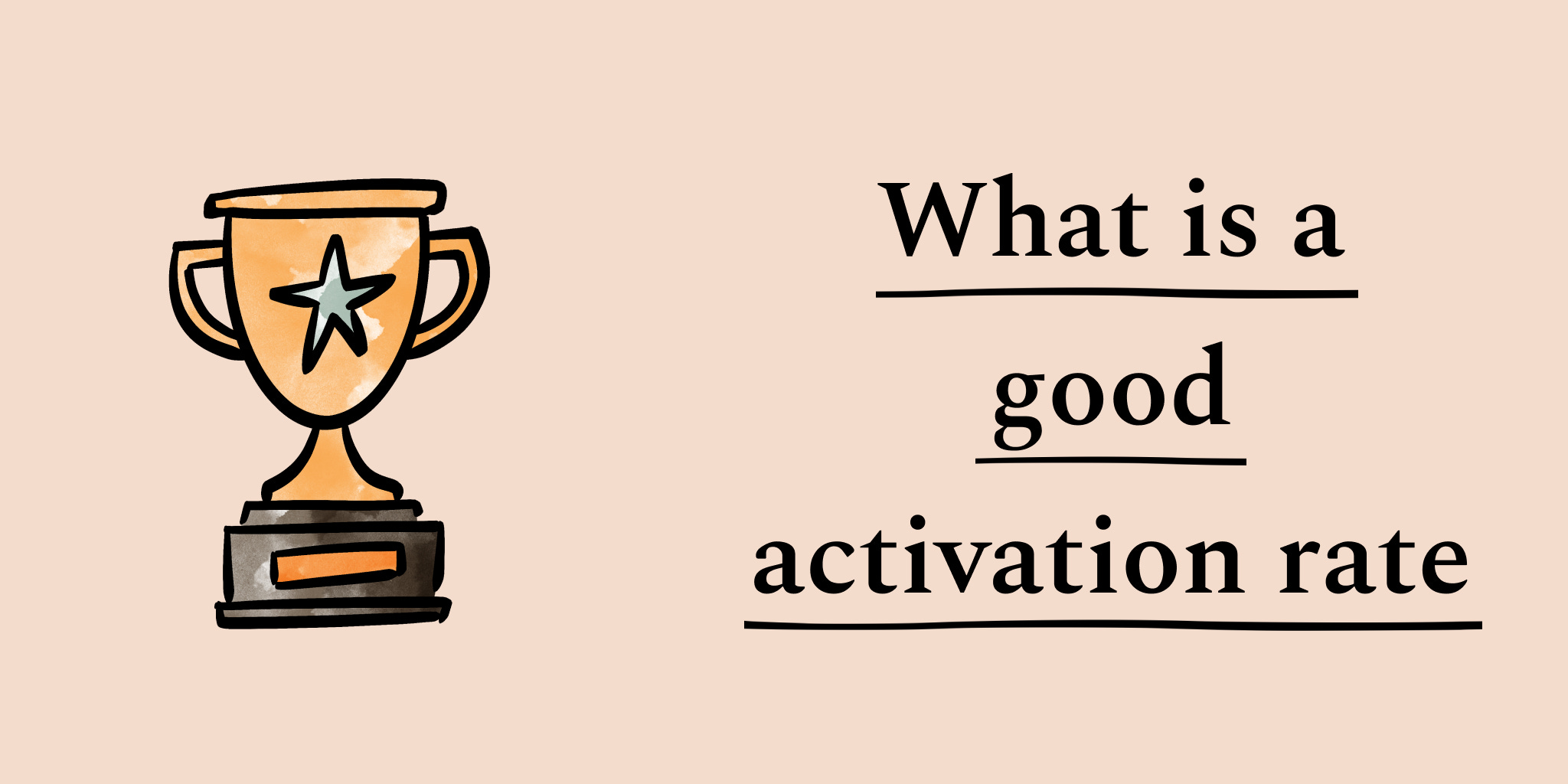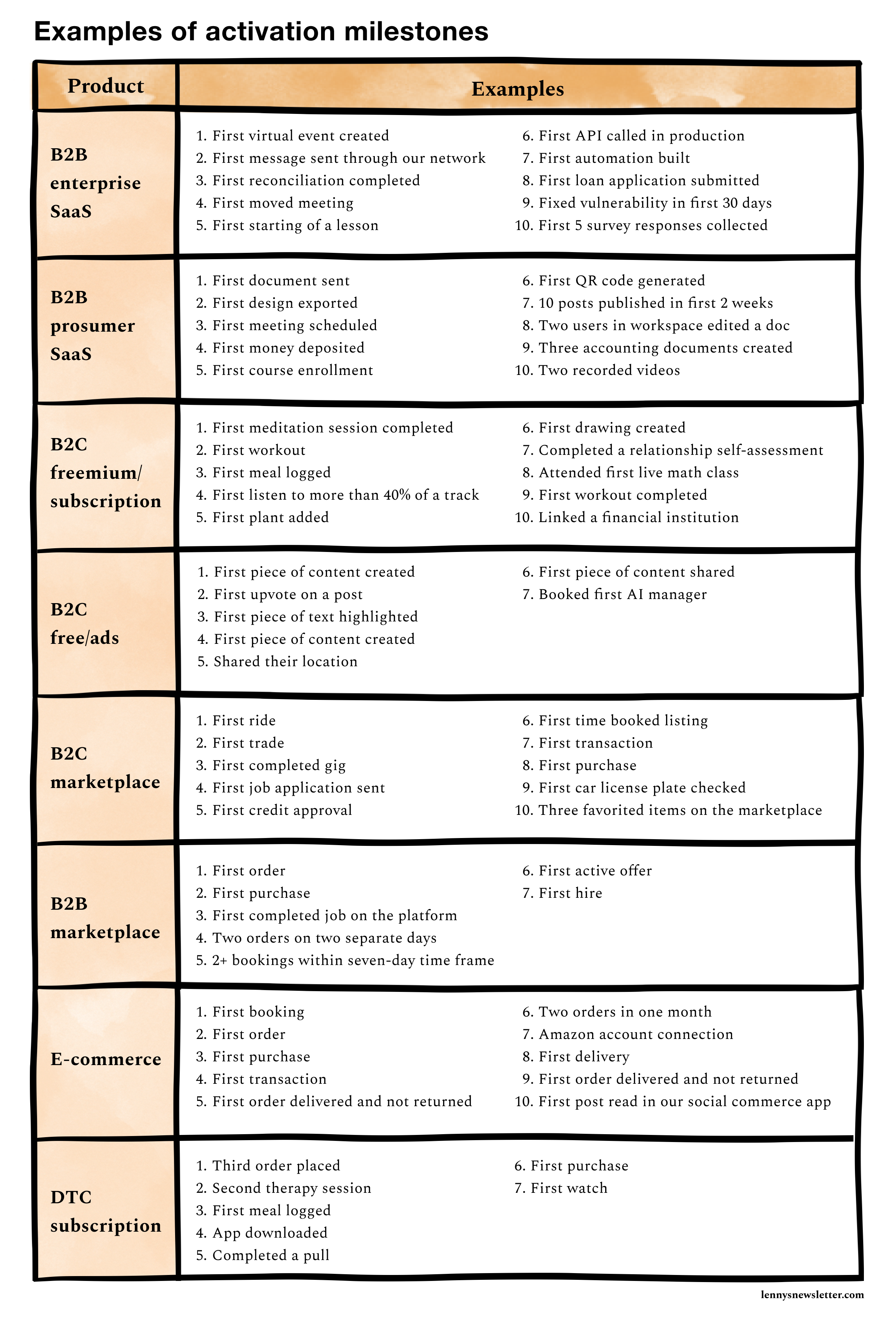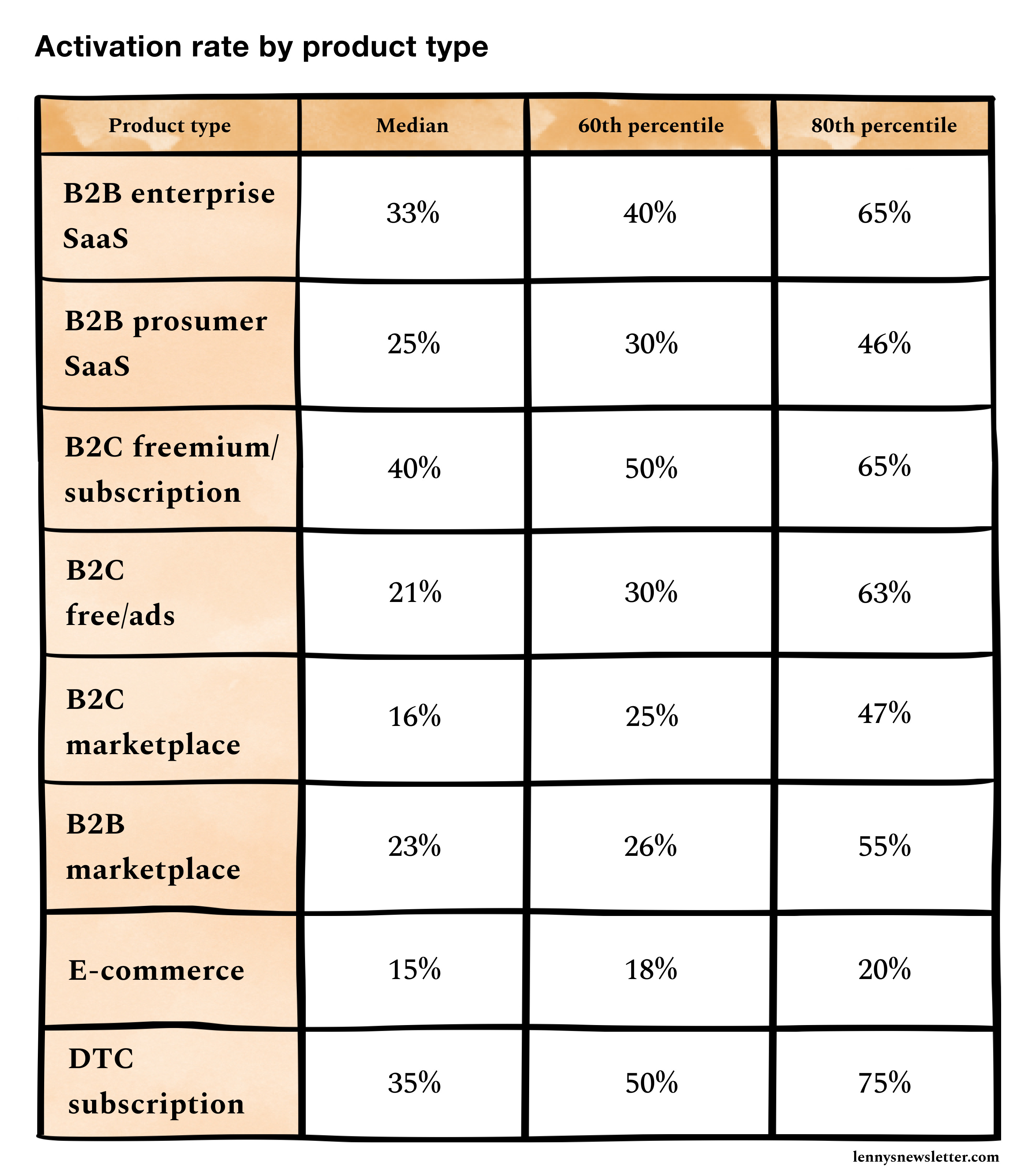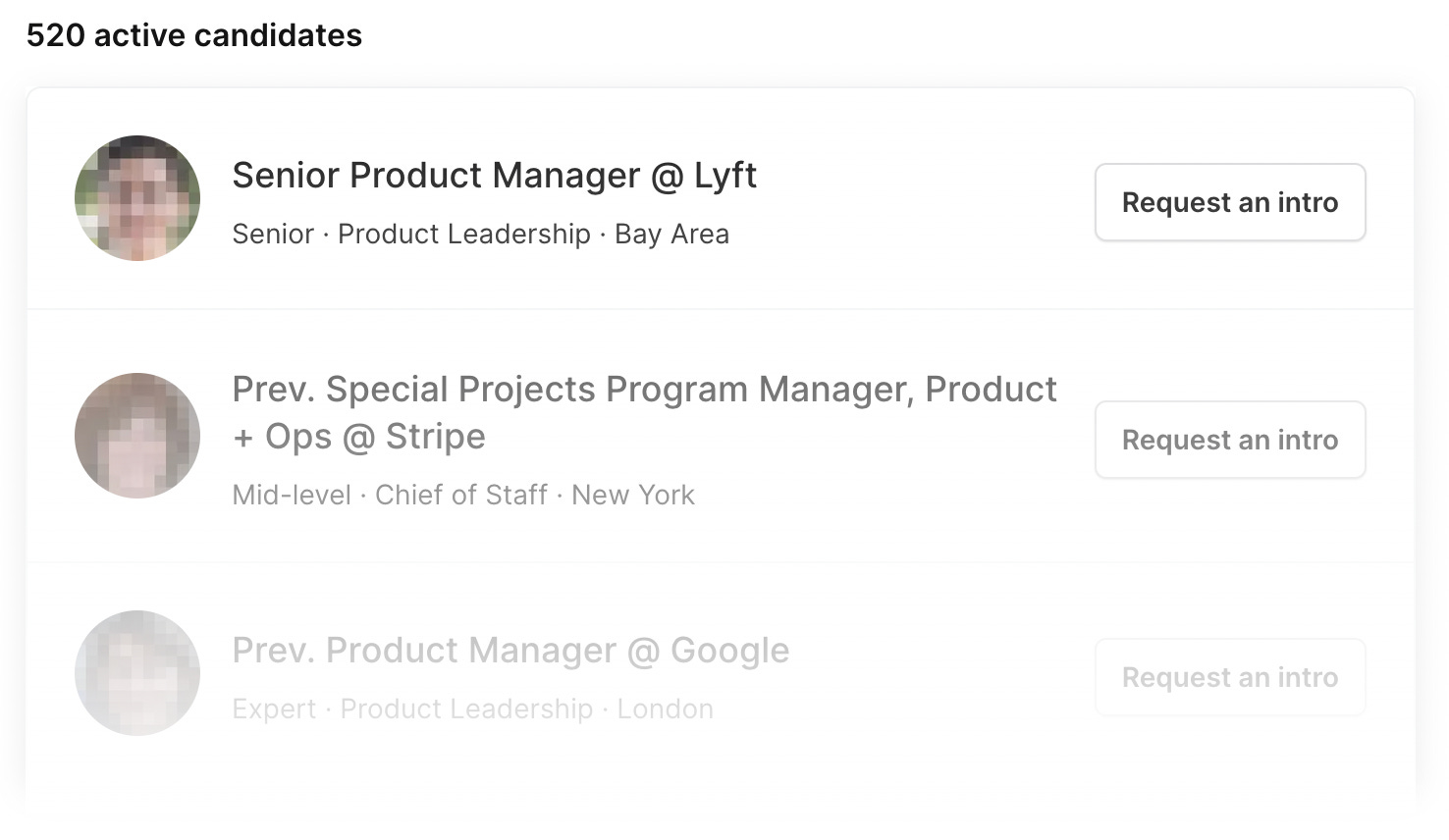Lenny's Newsletter - What is a good activation rate
What is a good activation rateBenchmarks and advice for increasing your activation rate, based on a survey of 500+ products👋 Hey, Lenny here! Welcome to this month’s ✨ free edition ✨ of Lenny’s Newsletter. Each week I humbly tackle reader questions about product, growth, working with humans, and anything else that’s stressing you out about work. If you’re not a subscriber, here’s what you missed this month: Subscribe to get access to these posts, and every post.
Increasing activation rate is one of the highest-leverage growth levers across most products, and it’s often the single best way to increase your retention. But knowing what a good activation rate is, and how to improve it, has been difficult if not impossible. For that reason, it’s been one of the most frequent questions I’ve received from readers over the years. To finally get you an answer, I teamed up with Yuriy Timen (growth advisor and recent podcast guest) to run a global benchmarking survey, asking readers to contribute their activation rate and what they’ve learned about increasing it. We exceeded our expectations and ended up with over 500 responses, which I believe is the largest survey of its kind. Here’s a sampling of products represented in this survey: Below, you’ll find GOOD and GREAT activation rates (by product type), the most common ways to increase activation rates, examples of great activation milestones, and a bunch of advice for setting and improving your activation rates. We did our best to analyze this data and draw conclusions, but I’m confident we missed something. If you find anything amiss, please let us know by leaving a comment. We’ll integrate feedback and update the post with any additional learnings 👇 And finally, if you filled out our survey and shared your activation rates with us, you should have received an email with a link to the raw survey data. If you didn’t get that email, please let us know and we’ll get it right over to you. If you missed the boat and didn’t contribute to the survey but still want to see the raw results, at the end of this post there’s a second opportunity. Let’s get into it. 1. What is activation rate?Your activation rate is the percentage of your new users who hit your activation milestone. Your activation milestone (often referred to as your “aha moment”) is the earliest point in your onboarding flow that, by showing your product’s value, is predictive of long-term retention. A user is typically considered activated when they reach this milestone. A good activation event is often associated with the beginnings of a user forming a new habit inside the product, and since increasing activation rate is one of the best levers for increasing retention, it’s often a major focus for growth teams. 2. What are examples of activation milestones?A good activation metric should be two things:
In the survey, we looked at activation rates by eight product types:
Below are some of the most common activation milestones, categorized by product type: A few of our favorite examples of activation milestones:
Below we’ll share the most common mistakes when setting your activation milestone, but by far the most common mistake is to set the activation point too early or too late. Too early would be simply finishing the sign-up process for a SaaS product, and too late would be three purchases in a marketplace or e-commerce site. Activation is meant to be a leading indicator of a new user sticking around and becoming a customer—not the act of becoming a long-term customer. It’s meant to be something your team can do to increase retention, and defining activation as either sign-up or multiple purchases defies the purpose behind an activation metric. 3. What is a good activation rate?Based on our survey results, broadly, the average activation rate is 34%, and the median activation rate is 25%. For just SaaS products (removing marketplaces, e-commerce, and DTC), the average activation rate is 36%, and the median is 30%. Here’s what activation rates look like by individual product types: Why such variance in activation rates?Mostly due to the milestone definition, and how much effort it takes to get there. For example, marketplaces and e-commerce companies have the lowest activation rates because they generally define their activation milestone as the first transaction (i.e. spending money). B2C freemium products have the highest activation rate because their typical activation milestone is low-friction (e.g. starting a meditation session, logging a meal, listening to a music track). 4. What are the most common ways to increase activation?In our survey, we asked, “If you’ve had success improving activation rate, what change has had the biggest impact?” Here are the eight most commonly referenced tactics: Here are direct quotes from survey responders sharing what most helped them increase their activation rate: i. Simpler onboarding UI/UX
ii. Reducing onboarding friction
iii. Emails and follow-up comms
iv. Optimizing copy
v. Smarter top-of-funnel targeting
vi. Sales outreach
vii. Adding incentives
viii. Showing value earlier
Other:
5. What are the most common mistakes people make when setting their activation milestone?
6. What percentage of companies have a time-bound activation definition?Based on our results, about 6% of respondents had time-bound activation, with a median of 10 days and a mode of 7 days. We believe, however, that this is far undercounting the reality, as we didn’t specifically ask about it. Also, about 10% of respondents have a two-part milestone (e.g. get 2+ bookings within 7-day time frame; share 3 documents in 90 days). 7. How do you determine your activation milestone, and make sure it’s causally linked to new-user retention rather than just correlated?Initially, your selected activation event will be hypothesis-driven and hence only correlative to longer-term retention and/or monetization. That’s OK. Take your best shot. It is only through structured experimentation that you will be able to tell if there is a causal relationship between your activation metric and longer-term value extraction. Specifically, you would run a series of experiments geared at improving your activation metric. As you accumulate winners, you will monitor your later-stage metric to see if they uptick as well. If so, you have proven out causality. If not, you have the arduous task before you of going back to the drawing board and iterating on your definition of an activation metric. Our advice is to not overthink it—pick a milestone that’s relatively early in a new user’s lifecycle that strongly correlates with long-term retention. Then just go. Facebook’s classic activation milestone is a great example of this bias toward action, as shared by Adriel Frederick:  Bonus ask: How did you come up with your activation milestone?We’re curious what level of analysis teams have done to determine their activation milestone. What data did you specifically look at? What did you look for in the data? How correlated was the data with retention? If you share details on how you determined your own activation milestone, we’ll share the raw survey results with you 👇🙏 📚 Further study
Have a fulfilling and productive week 🙏 📣 Join Lenny’s Talent Collective 📣If you’re hiring, join Lenny’s Talent Collective to start getting bi-monthly drops of world-class hand-curated product and growth people who are open to new opportunities. If you’re looking for a new gig, join the collective to get personalized opportunities from hand-selected companies. You can join publicly or anonymously, and leave anytime. If you’re finding this newsletter valuable, share it with a friend, and consider subscribing if you haven’t already. Sincerely, Lenny 👋 You’re a free subscriber to Lenny's Newsletter. For the full experience, become a paid subscriber. |
Older messages
How to build trust and grow as a product leader | Fareed Mosavat (Reforge, Slack, Instacart, Zynga, Pixar)
Sunday, October 23, 2022
Listen now (65 min) | Fareed Mosavat is Chief Development Officer at Reforge, where he leads production, content, and new-product experiences. Previously, he led growth and product teams at Slack and
Humanizing product development | Adriel Frederick (Reddit, Lyft, Facebook)
Thursday, October 20, 2022
Listen now (67 min) | Adriel Frederick is VP of Product Management at Reddit X, where he helps incubate and scale new products. He is a former Product Lead at Facebook, as well as a former PM and
Mission → Vision → Strategy → Goals → Roadmap → Task
Tuesday, October 18, 2022
As taught to us by Oceans 11
Building better product roadmaps | Janna Bastow (Mind the Product, ProdPad)
Sunday, October 16, 2022
Listen now (54 min) | Janna Bastow is a former product manager, and currently the CEO and co-founder of ProdPad. She also co-founded Mind the Product, a community for PMs, which has grown to 300000
How to build a high-performing growth team | Adam Fishman (Patreon, Lyft, Imperfect Foods)
Thursday, October 13, 2022
Listen now (66 min) | Adam Fishman has decades of experience building and scaling some incredible businesses, like Lyft, Patreon, and Imperfect Foods. He is currently an Executive in Residence at
You Might Also Like
🚀 Ready to scale? Apply now for the TinySeed SaaS Accelerator
Friday, February 14, 2025
What could $120K+ in funding do for your business?
📂 How to find a technical cofounder
Friday, February 14, 2025
If you're a marketer looking to become a founder, this newsletter is for you. Starting a startup alone is hard. Very hard. Even as someone who learned to code, I still believe that the
AI Impact Curves
Friday, February 14, 2025
Tomasz Tunguz Venture Capitalist If you were forwarded this newsletter, and you'd like to receive it in the future, subscribe here. AI Impact Curves What is the impact of AI across different
15 Silicon Valley Startups Raised $302 Million - Week of February 10, 2025
Friday, February 14, 2025
💕 AI's Power Couple 💰 How Stablecoins Could Drive the Dollar 🚚 USPS Halts China Inbound Packages for 12 Hours 💲 No One Knows How to Price AI Tools 💰 Blackrock & G42 on Financing AI
The Rewrite and Hybrid Favoritism 🤫
Friday, February 14, 2025
Dogs, Yay. Humans, Nay͏ ͏ ͏ ͏ ͏ ͏ ͏ ͏ ͏ ͏ ͏ ͏ ͏ ͏ ͏ ͏ ͏ ͏ ͏ ͏ ͏ ͏ ͏ ͏ ͏ ͏ ͏ ͏ ͏ ͏ ͏ ͏ ͏ ͏ ͏ ͏ ͏ ͏ ͏ ͏ ͏ ͏ ͏ ͏ ͏ ͏ ͏ ͏ ͏ ͏ ͏ ͏ ͏ ͏ ͏ ͏ ͏ ͏ ͏ ͏
🦄 AI product creation marketplace
Friday, February 14, 2025
Arcade is an AI-powered platform and marketplace that lets you design and create custom products, like jewelry.
Crazy week
Friday, February 14, 2025
Crazy week. ͏ ͏ ͏ ͏ ͏ ͏ ͏ ͏ ͏ ͏ ͏ ͏ ͏ ͏ ͏ ͏ ͏ ͏ ͏ ͏ ͏ ͏ ͏ ͏ ͏ ͏ ͏ ͏ ͏ ͏ ͏ ͏ ͏ ͏ ͏ ͏ ͏ ͏ ͏ ͏ ͏ ͏ ͏ ͏ ͏ ͏ ͏ ͏ ͏ ͏ ͏ ͏ ͏ ͏ ͏ ͏ ͏ ͏ ͏ ͏ ͏ ͏ ͏ ͏ ͏ ͏ ͏ ͏ ͏ ͏ ͏ ͏ ͏ ͏ ͏ ͏ ͏ ͏ ͏ ͏ ͏ ͏ ͏ ͏ ͏ ͏ ͏ ͏ ͏ ͏ ͏ ͏ ͏ ͏ ͏
join me: 6 trends shaping the AI landscape in 2025
Friday, February 14, 2025
this is tomorrow Hi there, Isabelle here, Senior Editor & Analyst at CB Insights. Tomorrow, I'll be breaking down the biggest shifts in AI – from the M&A surge to the deals fueling the
Six Startups to Watch
Friday, February 14, 2025
AI wrappers, DNA sequencing, fintech super-apps, and more. ͏ ͏ ͏ ͏ ͏ ͏ ͏ ͏ ͏ ͏ ͏ ͏ ͏ ͏ ͏ ͏ ͏ ͏ ͏ ͏ ͏ ͏ ͏ ͏ ͏ ͏ ͏ ͏ ͏ ͏ ͏ ͏ ͏ ͏ ͏ ͏ ͏ ͏ ͏ ͏ ͏ ͏ ͏ ͏ ͏ ͏ ͏ ͏ ͏ ͏ ͏ ͏ ͏ ͏ ͏ ͏ ͏ ͏ ͏ ͏ ͏ ͏ ͏ ͏ ͏ ͏ ͏ ͏ ͏ ͏ ͏
How Will AI-Native Games Work? Well, Now We Know.
Friday, February 14, 2025
A Deep Dive Into Simcluster ͏ ͏ ͏ ͏ ͏ ͏ ͏ ͏ ͏ ͏ ͏ ͏ ͏ ͏ ͏ ͏ ͏ ͏ ͏ ͏ ͏ ͏ ͏ ͏ ͏ ͏ ͏ ͏ ͏ ͏ ͏ ͏ ͏ ͏ ͏ ͏ ͏ ͏ ͏ ͏ ͏ ͏ ͏ ͏ ͏ ͏ ͏ ͏ ͏ ͏ ͏ ͏ ͏ ͏ ͏ ͏ ͏ ͏ ͏ ͏ ͏ ͏ ͏ ͏ ͏ ͏ ͏ ͏ ͏ ͏ ͏ ͏ ͏ ͏ ͏ ͏ ͏ ͏ ͏ ͏ ͏ ͏ ͏ ͏ ͏ ͏ ͏






